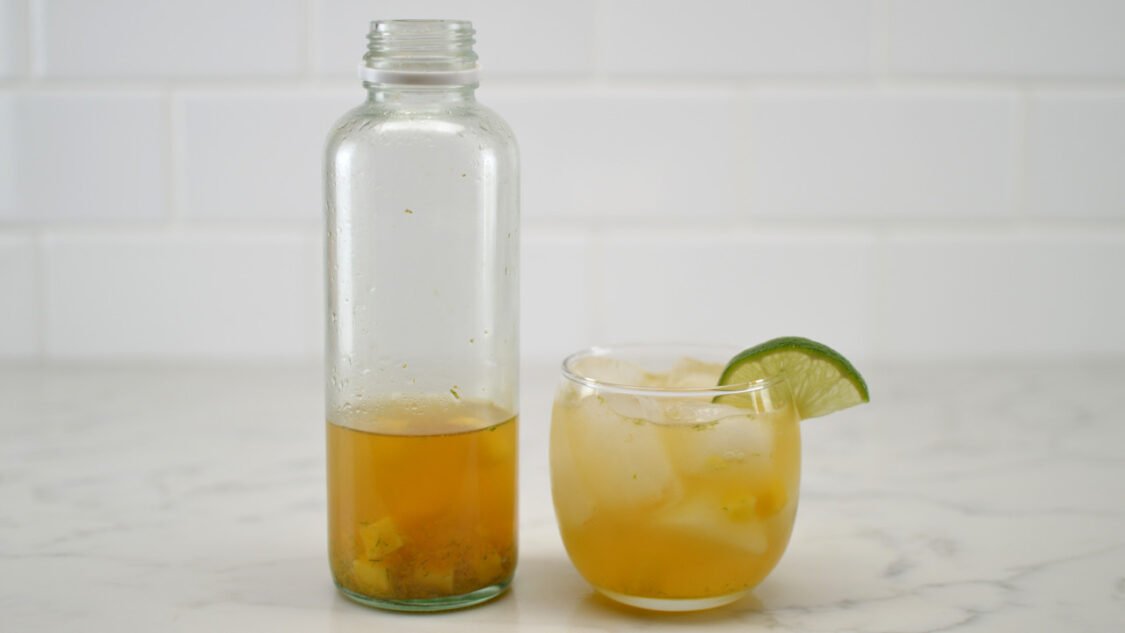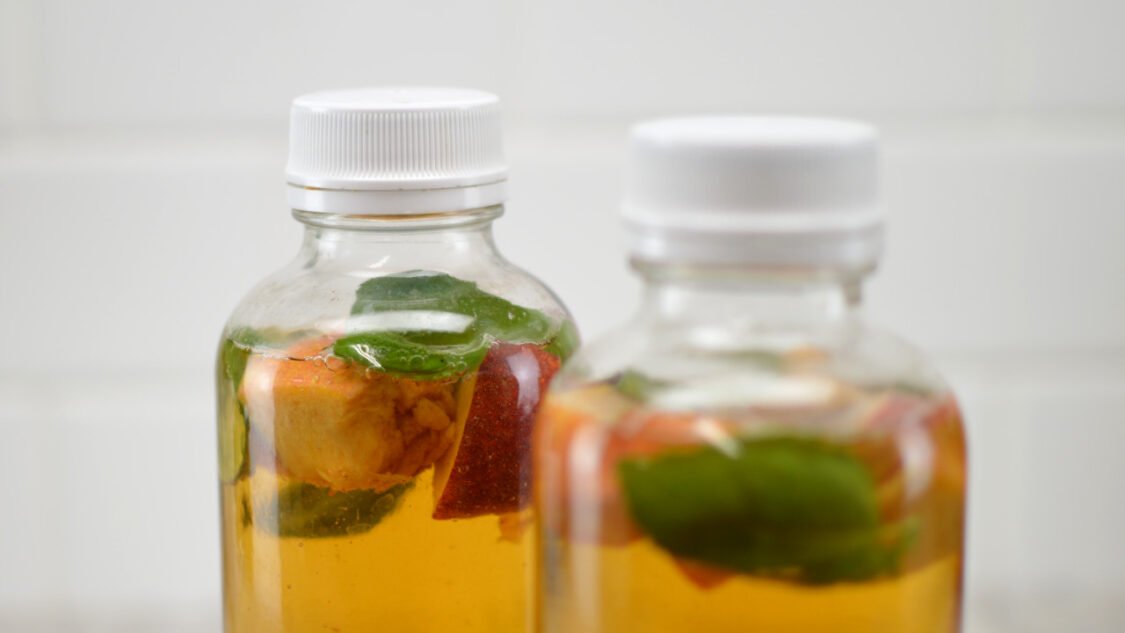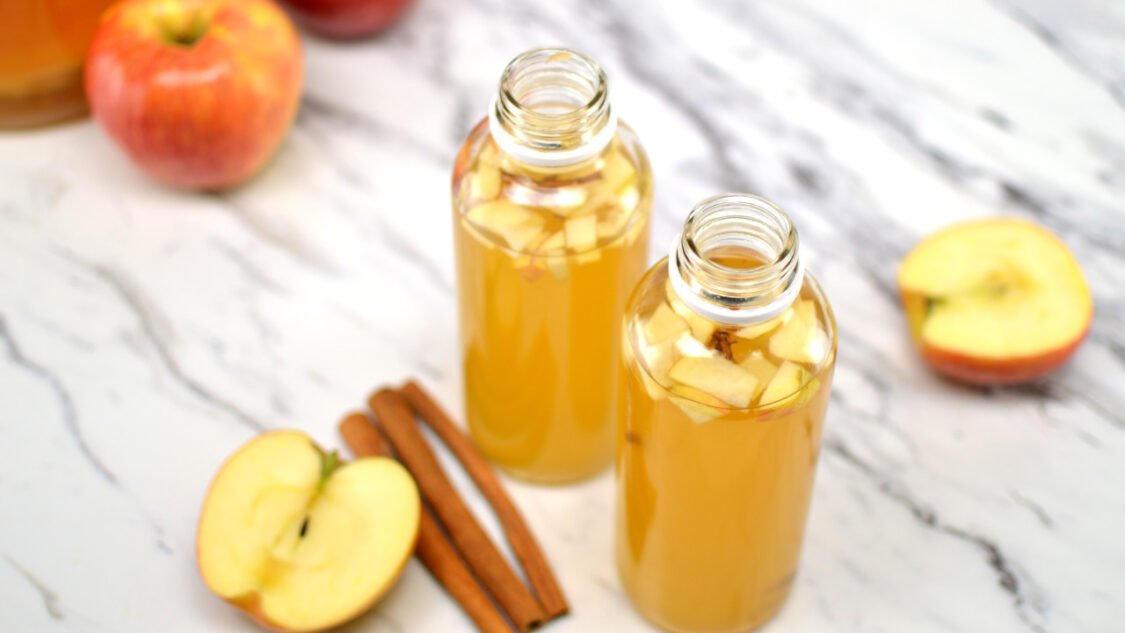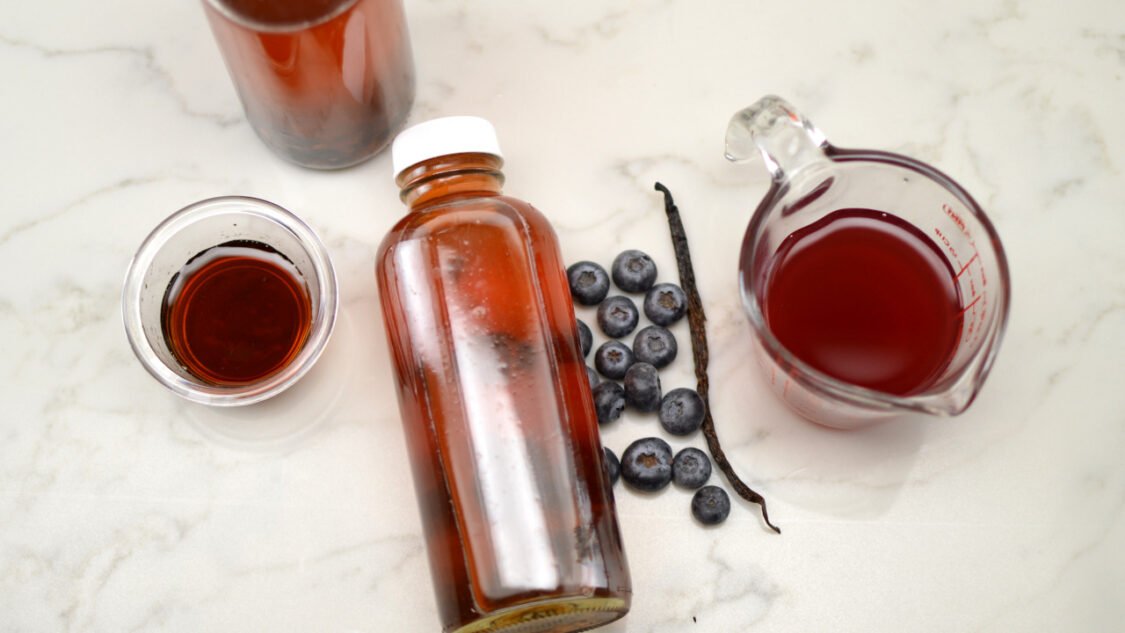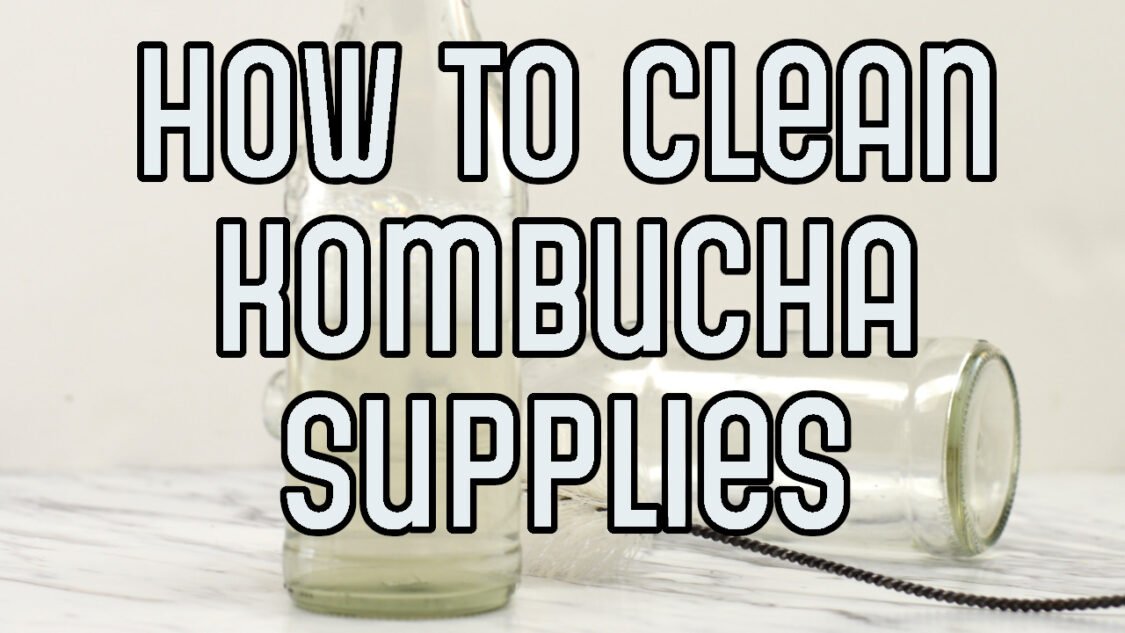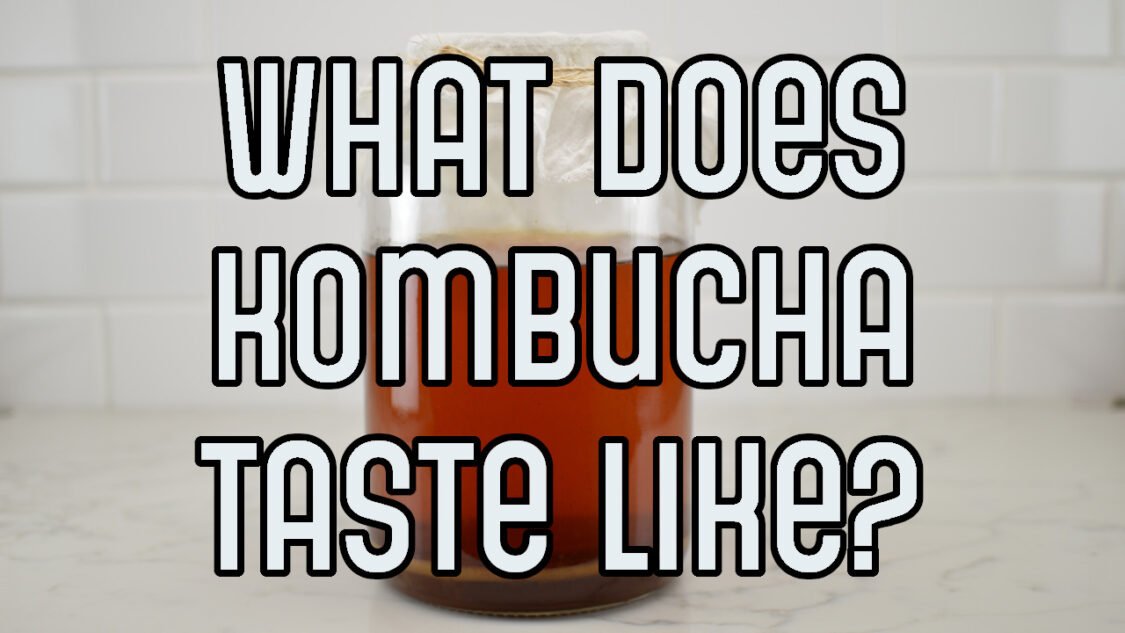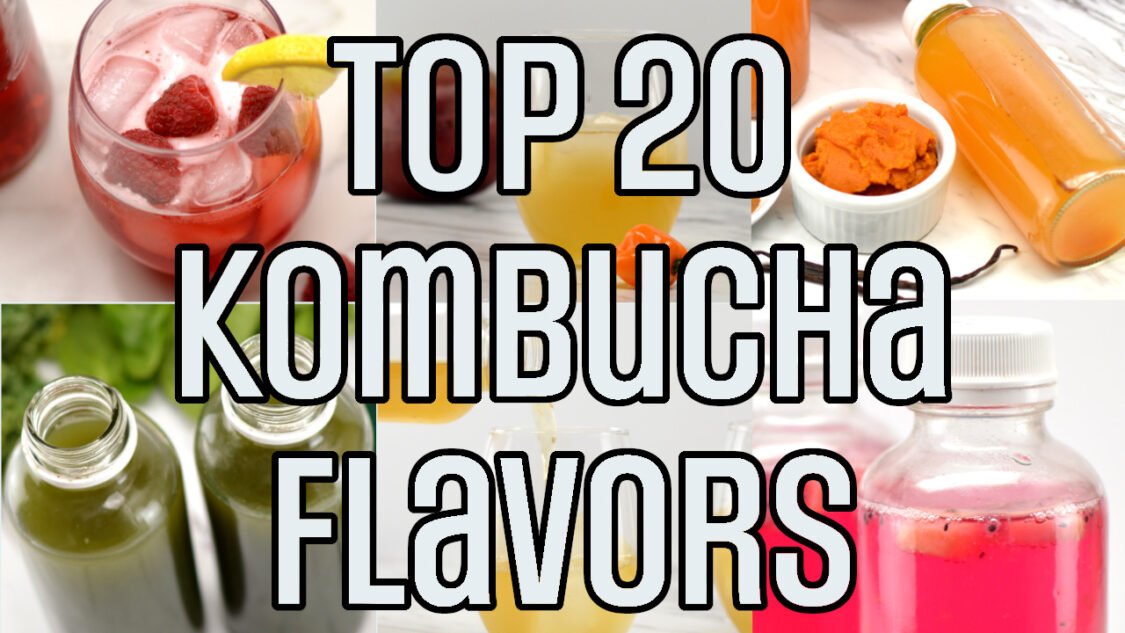Lemon Kombucha
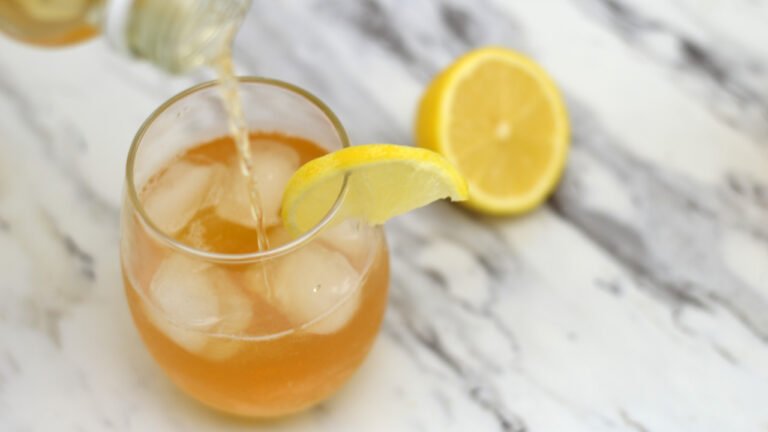
Lemon kombucha is one of my all-time favorites. It was the flavor I used for my first batch. It only requires one additional ingredient, lemons, is super simple to make and turns out fantastic every time!
This recipe is a great introduction to the process of making kombucha and the combination of lemon and kombucha is a great base to build other flavor variations off of.
Lemon kombucha, while delicious over ice alone, is also a great base to make a Bees Knees Kombucha Mocktail, Lemon Drop Kombucha Mocktail and French 77 Kombucha Mocktail.
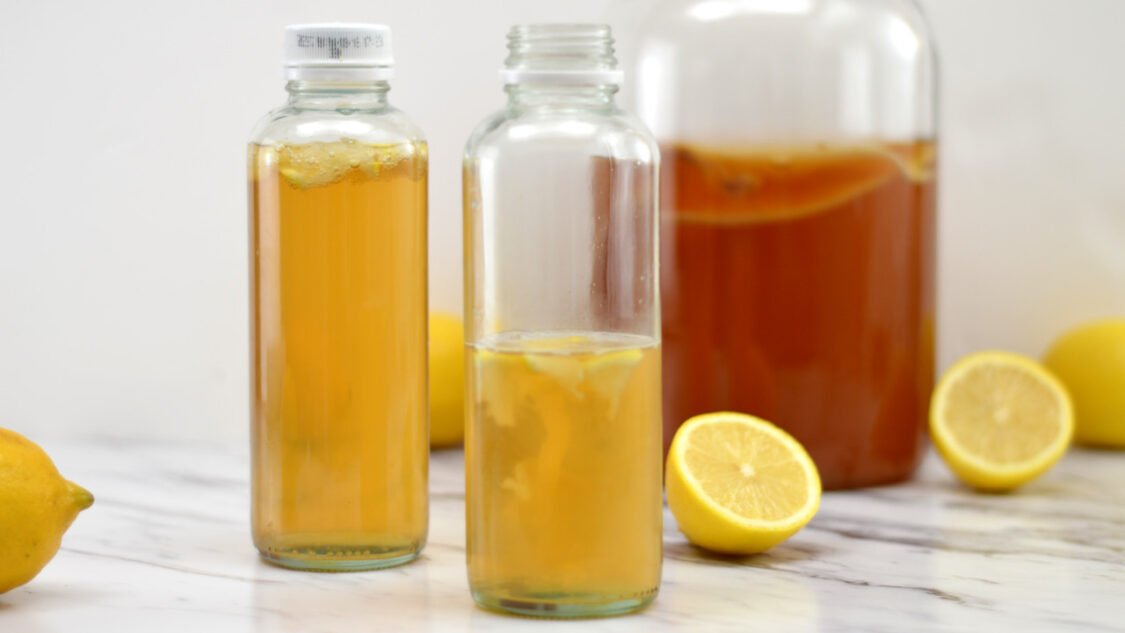
Kombucha Fermentation Overview
There are two fermentation phases when making kombucha:
Primary Fermentation: This is when you transform sweet tea into tart and tasty kombucha. Get all the details at how to make kombucha.
Secondary Fermentation: This is when you carbonate the kombucha by adding flavor and sugars (like lemons and ginger ?) and bottling it.
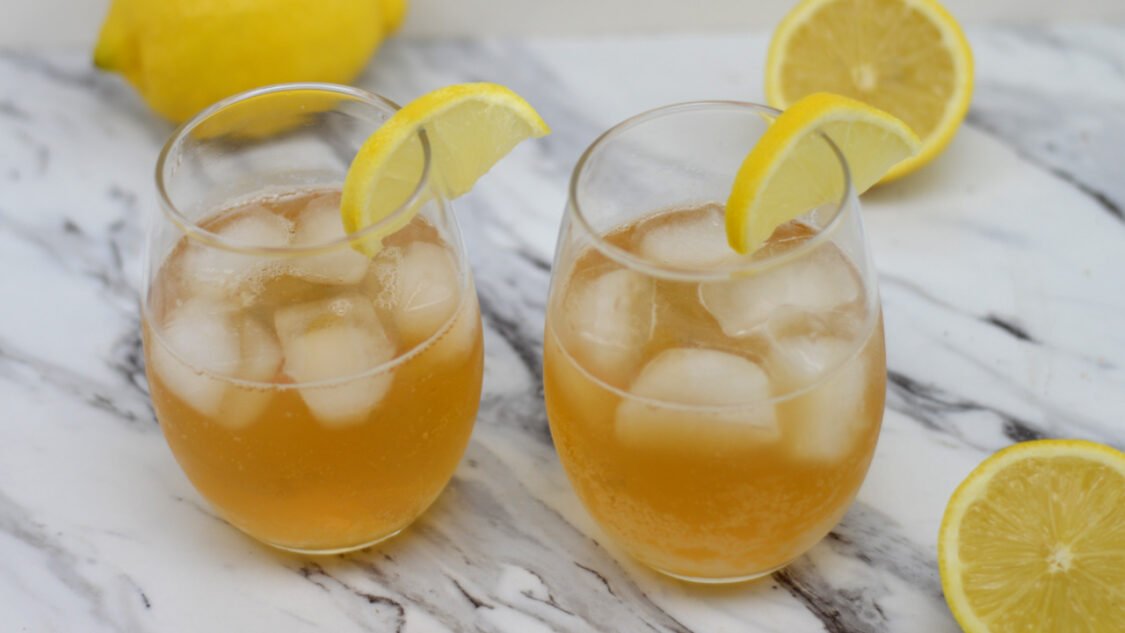
Preparing for Secondary Fermentation
This recipe makes about 7 x 16 fluid ounce bottles of finished kombucha (from a 1-gallon batch of unflavored homemade kombucha aka from your primary fermentation).
Reserve 2 cups (about 16 oz / 0.47L) kombucha and your SCOBY from your completed primary fermentation and set aside – you will use this as your starter for your next gallon batch of kombucha.
With your kombucha starter tea and SCOBY placed aside, you now have enough kombucha left to flavor and fill your bottles. This guide assumes are using 16 oz. glass bottles which are a popular choice for kombucha; however, there are many options for bottling kombucha.
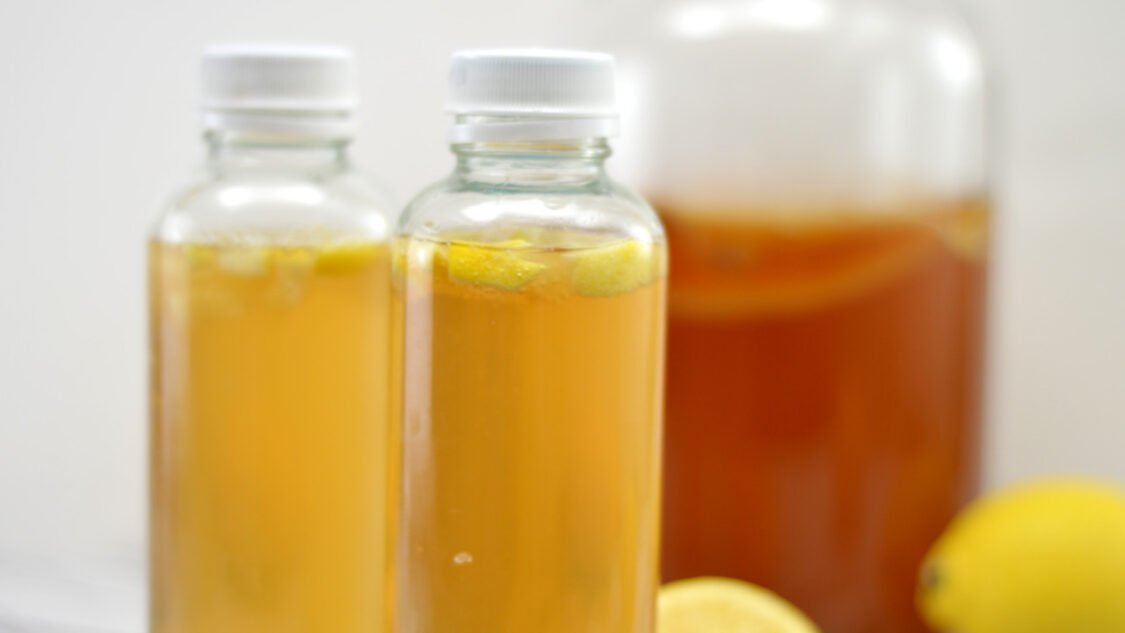
Ingredients to make Lemon Kombucha
Kombucha Finished kombucha from your first fermentation is the base to which you will add the blueberry flavors
Lemons: Here we will use all of the lemon: zest, rind and fresh for layers of lemon flavor. Lemon is often described as having the aromas of rose, lavender and pine with a slight herbaceous note. Citral is the compound which contributes to most to the characteristic “citrus” flavor. Citral in lemons can be found in the form of two isomers, neral and geranial (same compound with a different arrangement of atoms in the molecule and therefore different characteristics.)
Sugar: A touch of additional sugar for bacteria and yeast to feed on which creates carbonation–extra fizzy goodness. When filling 16 ounce bottles I’ve found a sugar cube has the right amount of sugar (1 tsp) for carbonation and is a convenient way to add the right amount without the mess.
How to make Lemon Kombucha
Add Flavors: Add chopped lemon to the bottles.
Bottle: Transfer kombucha to fermentation bottles.
Condition: For 3 to 10 days, until it reaches the carbonation level you like.
Enjoy: Chill in the fridge before serving.
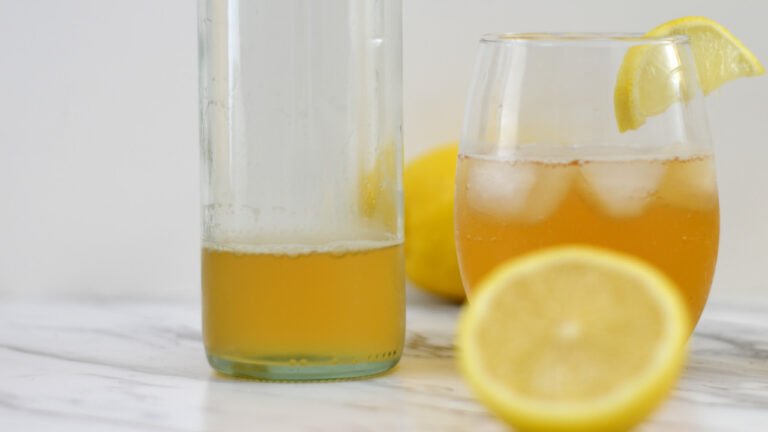
Lemon Kombucha Recipe
Yield: 7 bottles • Active time: 20 minutes • Total time: 3 -10 days
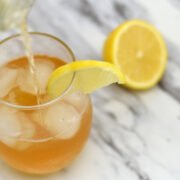
This recipe assumes you are doing a secondary fermentation (flavoring and carbonation) in the bottle. You may also incorporate a third fermentation using the same proportions but following the third fermentation steps.
Ingredients:
1 gallon homemade kombucha from a first fermentation, 3.7 L
2 lemons, zested and sliced into 1/4 pieces (discard seeds)
7 sugar cubes or 2 Tbsp. sugar 12 g
Instructions:
Prepare lemons: Zest the lemons then coarsely chop rind and flesh, removing seeds
Prepare ginger: Rinse and finely chop the ginger. I’ve found that peeling is not necessary
Flavor: Mix lemon zest and chopped lemon. Evenly divide among bottles
Sweeten: Add one sugar cube per 16 bottle or evenly divide sugar between bottles (about 1 tsp per bottle)
Fill bottles: Transfer kombucha into fermentation bottles, leaving about 1 inch empty at the top
Cap: Cap the filled bottles and tighten the cap snugly.
Ferment: Place in a dark, room temperature area for 3 to 10 days, until it reaches the carbonation level you like. This process will go faster in warmer climates, and slower in cooler climates.
Enjoy: Chill in the fridge before serving. Homemade Kombucha can be stored in the fridge, tightly sealed, for several weeks.
If desired, you can strain the kombucha as you serve it into glasses to remove the fruit but all of the tart and zesty goodness will remain.
Tips & Tricks:
Make sweet tea for your next batch the night before you flavor and bottling and let it cool on the stove overnight so that you can flavor your kombucha and get your next batch started at the same time.
If this is your first time brewing, it may be helpful to use a plastic water bottle as a gauge. Fill a recyclable plastic bottle with kombucha (leaving 1.5 inches empty at the top). When this bottle becomes rock hard, you’ll know the glass bottles are also ready. This will help you gauge how long it take for kombucha to carbonate your climate and will prevent bottle explosions.
Nutrition Information:
Kombucha Recipes You Might Also Like
More Kombucha Knowledge
Helping you learn to brew kombucha, find inspiration for new kombucha flavors and use kombucha to make kombucha mocktails

